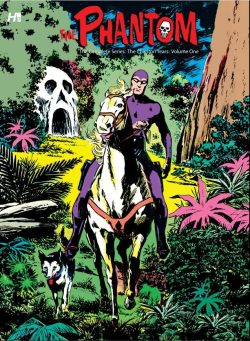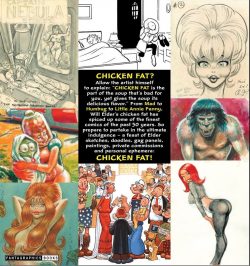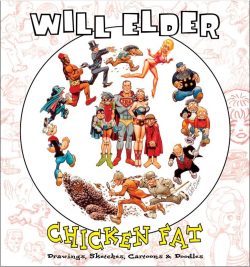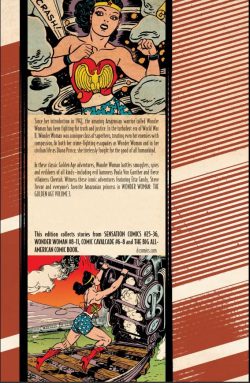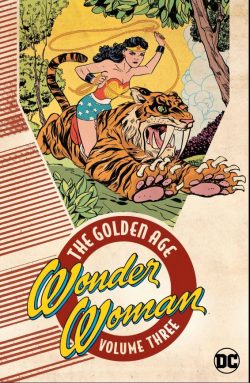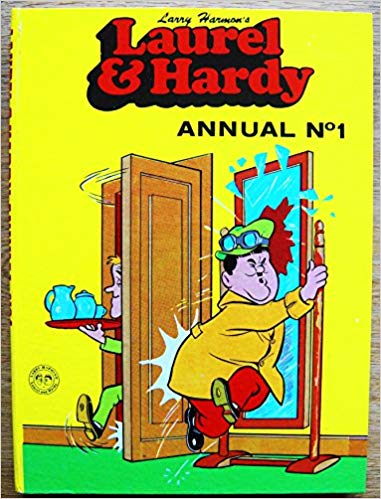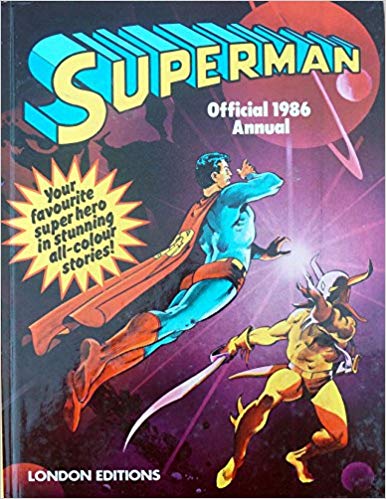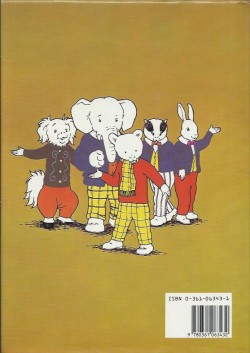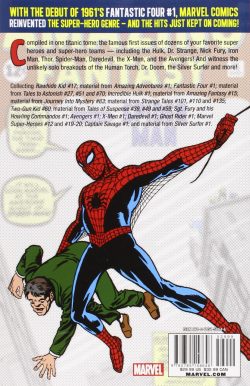
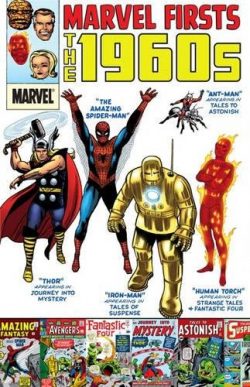
By Stan Lee, Jack Kirby, Steve Ditko, Larry Lieber, Roy Thomas, Gary Friedrich, Arnold Drake, Steve Parkhouse, Don Heck, Bill Everett, Dick Ayers, Gene Colan, John Buscema, George Tuska & various (Marvel)
ISBN: 978-0-7851-5864-6 (TPB)
For most fans, the Marvel Age of Comics began with Fantastic Four #1 at the tail end of 1961, but the company itself cites Marvel Comics #1 from 1939, when the outfit was called Timely as the big natal event. That means this year is their 80th anniversary and has been celebrated in a number of big-ticket compilations.
This hefty trade paperback (or digital edition if you prefer) from 2011 isn’t one of them, but is a superb compilation of the decade which made the House of Ideas a global force and household name. It collects the first story of each character’s own series (not necessarily the same as a debut appearance) and highlights key moments through material taken from Rawhide Kid #17, Amazing Adventures #1, Fantastic Four #1, Tales to Astonish #27, 51 & 70, Incredible Hulk #1, Amazing Fantasy #15, Journey into Mystery #83, Strange Tales #101, 110 & 135, Two-Gun Kid #60, Tales of Suspense #39, 49 & 59, Sgt. Fury and his Howling Commandoes #1, The Avengers #1, X-Men #1, Daredevil #1, Ghost Rider #1, Marvel Super-Heroes #12, 19-20, Captain Savage #1 and Silver Surfer #1, all collectively covering August 1960 to May 1969 and incorporating a staggering and vast gallery of covers from the other titles that came and went with such breathtaking rapidity in those days.
As stated, the company-that-became-Marvel was still going – albeit in dire straits – when Stan Lee, Jack Kirby, Steve Ditko and a select band of others started their revolution in comics, and these tales offer unmatched insights into how that all happened by re-presenting official first appearances…
Opening in January 1960 with a selection of 16 genre covers ranging from Battle #70 to Love Romances #87 to Patsy Walker #89, the first inklings of what’s to come are seen in Rawhide Kid #17, by Lee, Kirby and inker Dick Ayers.
The Kid was one of Atlas’ older icons, having starred in his own title since 1955. A stock sagebrush centurion clad in buckskins, he was one of the first casualties when Atlas’ distribution crisis forced the company to cut back to 16 titles in the autumn of 1957.
With westerns huge on TV and youthful rebellion a hot topic in 1960, Lee & Kirby conceived a brand-new six-gun stalwart – a teenager in fact – and launched him in the summer of the year, economically continuing the numbering of his cancelled predecessor.
It’s important to remember that these yarns aren’t trying to be gritty or authentic: they’re accessing the vast miasmic morass of wholesome, homogenised Hollywood mythmaking that generations of consumer preferred to learning the grim everyday toil, travail and terror of the real Old West, so sit back, reset your moral compass to “fair enough†and revel in simplistic Black Hats versus White Hats, with all the dynamic bombast and bravura Kirby & inker Dick Ayers could muster…
It all begins with adopted teen Johnny Bart teaching all and sundry in a cow-town named Rawhide to ‘Beware! The Rawhide Kid’ after his retired Texas Ranger Uncle Ben is gunned down by fame-hungry cheat Hawk Brown. After very publicly exercising his right to vengeance, the naive kid flees Rawhide before he can explain, resigned to living as an outlaw forevermore…
His reputation is further enhanced when he routs a masked gang robbing the ‘Stagecoach to Shotgun Gap!‘ after which Don Heck delivers one of his slickly authentic western tales as a veteran gunslinger devises a way to end his own fearsome career ‘With Gun in Hand!’
The issue closes with by Lee, Kirby & Ayers revealing how another tragic misunderstanding confirms Johnny Bart’s destiny ‘When the Rawhide Kid Turned… Outlaw!’
Following a trio of romantic comedy covers – My Girl Pearl #7, Teen-Age Romance #77 and Life with Millie #8 – we turn to the company’s splendidly addictive men-vs-monsters anthology titles wherein Amazing Adventures #1 (cover-dated June 1961) begins a cautious experiment by launching a low-key – un-costumed – paranormal mystically empowered investigator for a short run of pre-superhero escapades.
‘I Am the Fantastic Dr. Droom!’ by Lee & Kirby with Ditko inking finds a seemingly sedate American drawn to Tibet to be trained in ancient mysteries before returning home as an occult consultant after which, the cover for Linda Carter, Student Nurse #1 takes us to the big moment when everything changed…
Fantastic Four #1 (November 1961) introduces a brave new world in the eponymous ‘The Fantastic Four’ as maverick scientist Reed Richards summon his fiancé Sue Storm, their pilot pal Ben Grimm and Sue’s teenaged brother Johnnybefore heading off on their first mission. In a flashback we discover that they are driven survivors of a private space-shot that went horribly wrong when Cosmic Rays penetrated their ship’s inadequate shielding. On crashing back to Earth, they found they’d all been hideously mutated into outlandish freaks.
Richards’ body became elastic, Sue gained the power to turn invisible, Johnny Storm could turn into living flame and tragic Ben turned into a shambling, rocky freak. Shaken but unbowed they vow to dedicate their new abilities to benefiting mankind. Crafted by Lee & Kirby with inks by George Klein & Christopher Rule, the drama intensified with ‘The Fantastic Four meet the Mole Man’ as they foil a plan by another outcast who controls monsters and slave humanoids from far beneath the Earth. This summation of the admittedly mediocre plot cannot do justice to the engrossing wonder of that breakthrough issue – we really have no grasp today of just how different in tone, how shocking it all was.
Next comes Ditko’s cover to Amazing Adult Fantasy #7, preceding a throwaway vignette from another of the company’s anthological monster mags. Taken from Tales to Astonish #27 (January 1962) a 7-page short introduces Dr Henry Pym, a maverick scientist who discovers a shrinking potion and discovers peril, wonder and a kind of companionship amongst the lowliest creatures on Earth and under it…
This engaging piece of fluff – which owed more than a little to the movie The Incredible Shrinking Man – was plotted by Lee, scripted by his brother Larry Lieber and stunningly illustrated by Kirby & Ayers.
The Incredible Hulk smashed right into his own bi-monthly comic and, after some classic romps by Young Marvel’s finest creators, crashed right out again. After 6 issues the series was cancelled and Lee retrenched, making the Gruff Green Giant a perennial guest-star in other Marvel titles until such time as they could restart the drama in their new “Split-Book†format in Tales to Astonish where Ant/Giant-Man was rapidly proving to be a character who had outlived his time.
Cover-dated May 1962, that first issue observes puny atomic scientist Bruce Banner, sequestered on a secret military base in the American desert and perpetually bullied by bombastic commander General “Thunderbolt†Ross as the clock counts down to the world’s first Gamma Bomb test. Besotted by Ross’s daughter Betty, Banner endures the General’s constant jibes as the timer ticks on and tension increases.
At the final moment Banner sees a teenager lollygagging at Ground Zero and frantically rushes to the site to drag the boy away. Unknown to everyone, the assistant he’s entrusted to delay the countdown has an agenda of his own…
Rick Jones is a wayward but good-hearted kid. After initial resistance he lets himself be pushed into a safety trench, but just as Banner prepares to join him The Bomb detonates…
Somehow surviving the blast, Banner and the boy are secured by soldiers, but that evening as the sun sets the scientist undergoes a monstrous transformation. He grows larger; his skin turns a stony grey…
In 6 simple pages that’s how it all starts, and no matter what any number of TV or movie reworkings or comicbook retcons and psycho-babble re-evaluations would have you believe that’s still the best and most primal take on the origin. A good man, an unobtainable girl, a foolish kid, an unknown enemy and the horrible power of destructive science unchecked…
Written by Lee, drawn by Kirby with inking by Paul Reinman, ‘The Coming of the Hulk’ barrels along as the man-monster and Jones are then kidnapped by Banner’s Soviet counterpart the Gargoyle for a rousing round of espionage and Commie-busting…
Crafting extremely well-received monster and mystery tales for and with Stan Lee, Ditko had been rewarded with his own title. Amazing Adventures/Amazing Adult Fantasy featured a subtler brand of yarn than Rampaging Aliens and Furry Underpants Monsters and the ilk which, though individually entertaining, had been slowly losing traction in the world of comics ever since National/DC had successfully reintroduced costumed heroes.
Lee & Kirby had responded with Fantastic Four and the ahead-of-his-time Incredible Hulk, but there was no indication of the renaissance to come when the cover of officially just-cancelled Amazing Fantasy #15 (August 1962) highlighted a brand new and rather eerie adventure character.
The wonderment came and went in 11 captivating pages: ‘Spider-Man!’ telling the parable of Peter Parker, a smart but alienated kid bitten by a radioactive spider on a high school science trip. Discovering he has developed arachnid abilities – which he augments with his own natural engineering genius – Parker does what any lonely, geeky nerd would do when given such a gift… he tries to cash in for girls, fame and money.
Creating a costume to hide his identity in case he makes a fool of himself, he becomes a minor celebrity – and a vain, self-important one. To his eternal regret, when a thief flees past, he doesn’t lift a finger to stop him, only to find when he returns home that his Uncle Ben has been murdered.
Crazy for vengeance, Parker stalks the assailant who made his beloved Aunt May a widow and killed the only father he had ever known, to find that it is the felon he couldn’t be bothered with. Since his irresponsibility led to the death of the man who raised him, the boy swears to always use his powers to help others…
It wasn’t a new story, but the setting was one familiar to every kid reading it and the artwork was downright spooky. This wasn’t the gleaming high-tech world of moon-rockets, giant aliens and flying cars – this stuff could happen to anybody…
The tragic last-ditch tale struck a chord with the reading public and by Christmas a new comicbook superstar was ready to launch in his own title, with Ditko eager to show what he could do with his first returning character since the demise of Charlton action hero Captain Atom…
The Mighty Thor was the comic series in which Jack Kirby’s restless fascination with all things Cosmic was honed and refined through his dazzling graphics and captivating concepts. The King’s examination of space-age mythology began in modest fantasy title Journey into Mystery where – in the summer of 1962 – a tried-and-true comicbook concept (feeble mortal transformed into god-like hero) was revived by the fledgling Marvel Comics to add a Superman analogue to their growing roster of costumed adventurers. JiM #83(August 1962), saw a bold costumed warrior jostling aside the regular fare of monsters, robots and sinister scientists in a brash, vivid explosion of verve and vigour.
The initial exploit follows crippled American doctor Donald Blake who takes a vacation in Norway only to encounter the vanguard of an alien invasion. Fleeing, he is trapped in a cave where he finds an old, gnarled walking stick. When in his frustration he smashes the stick into a huge boulder obstructing his escape, his puny frame is transformed into the Norse God of Thunder Mighty Thor!
Plotted by Lee, scripted by Lieber and illustrated by Kirby & inker Joe Sinnott (at this juncture a full illustrator, Sinnott would become Kirby’s primary inker for most of his Marvel career), ‘The Stone Men of Saturn’ is pure early Marvel: bombastic, fast-paced, gloriously illogical and captivatingly action-packed. The hugely under-appreciated Art Simek was the letterer and logo designer.
It was clear that they were were making it up as they went along – not in itself a bad thing – and all that infectious enthusiasm shows…
Amazing Fantasy #15 came out the same month as Journey into Mystery #83 and a month later Tales to Astonish #35 – the first to feature Henry Pym as the Astonishing Ant-Man in costumed capers appeared. In this volume you’ll find the cover to TtA #35 to mark that occasion…
Hot on the heels of the runaway success of Fantastic Four, Stan & Jack spun the most colourful and youngest member of the team into his own series, hoping to recapture the glory of the 1940s when the original Human Torch was one of the company’s “Big Three†superstars.
Within a year, the magic-&-monsters anthology title Strange Tales became home for the hot-headed hero: in #101, Johnny Storm started his ancillary solo career in the eponymous exploit ‘The Human Torch’.
Scripted by Lieber (over a plot by brother Stan) and sublimely illustrated by Kirby & Ayers, here the plucky lad investigates sabotage at a new seaside amusement park and promptly discovers Commie-conniving thanks to a Red spy called the Destroyer. Kirby would pencil the first few adventures before moving on, after which Ayers would assume control of the series’ look for most of its run although The King would generate some of the best covers of his Marvel career throughout the Torch’s Strange Tales tenure.
An odd inconsistency – or, more likely, tension – and drama-inducing gimmick did crop up here. Although public figures in the FF, Johnny and sister Sue live part-time in Long Island hamlet Glenville where, despite the townsfolk being fully aware of her as the glamorous and heroic Invisible Girl, they seem oblivious to the fact that her baby brother is the equally famous Torch. Many daft-but-ingenious pages of Johnny protecting his secret identity would ensue before the situation was brilliantly resolved…
Despite the runway success of its new superheroes, Marvel was still offering a range of genres such as westerns. August 1962 saw the retooling of another Atlas property as Two-Gun Kid #60 (cover-dated November) introduces Eastern lawyer Matt Hawk who moved to barbarous and unruly Tombstone, Texas in ‘The Beginning of the Two-Gun Kid’ by Lee, Kirby & Ayers. After merciless and relentless bullying, the tenderfoot is mentored by aged gunslinger Ben Dancer and transforms into a powerful, ultrafast deadly accurate shootist…
When Ben is driven out of town by a pack of thugs working for land baron Clem Carter, Hawk adopts a masked identity to see that justice is done…
Don Heck limned stand-alone tale ‘The Outcast’ revealing the naked ambition of a Navajo warrior before Hawk returns to complete his origin story in ‘I Hate the Two-Gun Kid!’ Here, romantic interest Nancy Carter falls foul of a scheme by her stepbrother to defraud her and frame the new hero in town…
More striking covers – Modelling with Millie #21 and Amazing Spider-Man #1 – precede the debut of the next Marvel milestone in Tales of Suspense #39 (March 1963 and on the newsstands for Christmas 1962).
Created in the aftermath of the Cuban Missile Crisis and at a time when “Red-baiting†and “Commie-bashing†were national obsessions in the U.S., the emergence of a brilliant new Thomas Edison employing Yankee ingenuity and invention to safeguard the World was an inevitable proposition. Combining the cherished belief that (US) technology could solve every problem with universal imagery of noble knights battling evil and the proposition became certainty. Of course, kids thought it great fun and very, very cool…
Scripted by Lieber (over Lee’s plot) and illustrated by the criminally unappreciated Don Heck, ‘Iron Man is Born’, see electronics wizard Tony Stark field testing his latest invention in Viet Nam when he is wounded by a landmine. Captured by Viet Cong commander Wong-Chu, he is given a grim ultimatum. Create weapons for the Reds and a doctor will remove from his chest the shrapnel that will kill him within seven days. If not…
Knowing Commies can’t be trusted, Stark and aged Professor Yinsen – another captive scientist – build a mobile iron lung (remember this was years before heart transplants and pace-makers) to keep his heart beating, equipping it with all the weapons their ingenuity and resources can secretly build. Naturally they succeed, defeating Wong-Chu, but not without tragic sacrifice…
Next was a new genre title, once again given a fresh treatment by Lee, Kirby & Ayers. Sgt. Fury and his Howling Commandos (May 1963) was an improbable, over-the-top WWII combat comics series similar in tone to later ensemble action movies such as The Magnificent Seven, The Wild Bunch and The Dirty Dozen. The surly squad of sorry reprobates were the first of three teams concocted by men-on-fire Kirby & Lee to secure fledgling Marvel’s growing position as the publisher to watch.
Sgt. Fury started out as a pure Kirby creation. As with all his various war comics, The King made everything look harsh and real and appalling: the people and places are all grimy and tired, battered yet indomitable.
The artist had served in some of the worst battles of the war and never forgot the horrific and heroic things he saw – and more graphically expressed in his efforts during the 1950s genre boom at a number of different companies. However, even at kid-friendly, Comics Code-sanitised Marvel, those experiences perpetually leaked through onto his powerfully gripping pages.
The saga began with blistering premier ‘Sgt. Fury, and his Howling Commandoes’ (that’s how they spellled it in the storrie-title – altho knot ennyware else): a rip-snorting yarn bursting with full-page panels interrupted by ‘Meet the Howling Commandos’ – a double-page spread spotlighting the seven members of First Attack Squad; Able Company. This comprised Fury himself, former circus strongman/Corporal “Dum-Dum†Dugan and privates Robert “Rebel†Ralston (a Kentucky jockey), college student Jonathan “Junior†Juniper, jazz trumpeter Gabriel Jones, mechanic Izzy Cohen and glamorous movie heartthrob Dino Manelli.
Controversially – even in the 1960s – this battle Rat Pack was an integrated unit with Jewish and black members as well as Catholics, Southern Baptists and New York white guys all merrily serving together. The Howling Commandos pushed envelopes and busted taboos from the very start…
The first mission was a non-stop riot pitting ‘Seven Against the Nazis!’ and putting the squad through their unique paces: a ragged band of indomitable warriors taking on hordes of square-necked Nazis to save D-Day and rescue a French resistance fighter carrying vital plans of the invasion.
A low-key introduction served for the next debut as something different debuted at the back of Strange Tales #110.
When the budding House of Ideas introduced a warrior wizard to their burgeoning pantheon in the summer of 1963 it was a bold and curious move. Bizarre adventures and menacing monsters were still incredibly popular but mention of magic or the supernatural – especially vampires, werewolves and their eldritch ilk – were severely proscribed by a censorship panel which dictated almost all aspects of story content.
At this time – almost a decade after an anti-comics public campaign led to Senate hearings – all comics were ferociously monitored and adjudicated by the draconian Comics Code Authority. Even though some of the small company’s strongest sellers were still mystery mags, their underlying themes and premises were almost universally mad science and alien wonders, not necromantic or thaumaturgic horrors.
That might explain Lee’s unobtrusive introduction of Steve Ditko’s mystic defender: an exotic, twilit troubleshooter inhabiting the shadowy outer fringes of rational, civilised society in one of those aforementioned monster titles.
Tales of Suspense #41 (May 1963) saw newcomer Iron Man battle crazed technological wizard Doctor Strange, and with the name successfully and legally in copyrightable print, preparations began for a truly different kind of ongoing hero.
The company had recently published a quasi-mystic precursor in balding, trench-coated Doctor Droom (who was later rechristened – or is that re-paganed? – Dr. Druid) and when Stephen Strange scored big, the prototype would be subsequently retro-written into Marvel continuity as an alternative candidate and precursor for the ultimate role of Sorcerer Supreme…
Thus, without any preamble, our first meeting with the man of mystery comes courtesy of a quiet little chiller which has never been surpassed for sheer mood and imagination. Lee & Ditko’s ‘Doctor Strange Master of Black Magic!’ in Strange Tales #110 (July 1963) saw a terrified man troubled by his dreams approach an exceptional consultant in his search of a cure…
That perfect 5-page fright-fest introduces whole new realms and features deceit, desperation, double-dealing and the introduction of both a mysterious and aged oriental mentor and devilish dream demon Nightmare in an unforgettable yarn that might well be Ditko’s finest moment…
After a period of meteoric expansion, by mid-1963 the ever-expanding Marvel Universe was finally ready to emulate the successful DC concept that cemented the legitimacy of the Silver Age of American comics – the concept of putting a bunch of all-star eggs in one basket which had made the Justice League of America such a winner and inspired the moribund Atlas outfit to try superheroes again…
Nearly 18 months after Fantastic Four #1, the fledgling House of Ideas had a viable stable of leading men (but only sidekick women) so Lee & Kirby assembled a handful of them and moulded them into a force for justice and soaring sales…
Seldom has it ever been done with such style and sheer exuberance. Cover dated September 1963, The Avengers #1 kicks off with ‘The Coming of the Avengers’: one of the cannier origin tales in comics. Instead of starting at a zero point and acting as if the reader knew nothing, Stan & Jack (plus inker Dick Ayers) assumed readers had at least a passing familiarity with Marvel’s other titles and wasted very little time or energy on introductions.
In Asgard, God of Mischief Loki is imprisoned on a dank isle, hungry for vengeance on his half-brother Thor. Observing Earth, the wicked Asgardian espies monstrous, misunderstood Hulk and mystically engineers a situation wherein the man-brute seemingly goes on a rampage, simply to trick the Thunder God into battling the brute.
When the Hulk’s sidekick Rick Jones radios the FF for assistance, devious Loki diverts the transmission and smugly awaits the outcome of his trickery Sadly, Iron Man, Ant-Man and the Wasp also pick up the redirected SOS. As the heroes converge in the American Southwest to search for the Jade Giant, they soon realize that something is oddly amiss…
This terse, epic, compelling and wide-ranging yarn (New York, New Mexico, Detroit and Asgard in 22 pages) is Lee & Kirby at their bombastic best, but that same month they also premiered another super squad that was the hero team’s polar opposite…
X-Men #1 introduced gloomy, serious Scott “Slim†Summers (Cyclops), ebullient Bobby Drake AKA Iceman, wealthy golden boy Warren Worthington III codenamed Angel, and erudite, brutish genius Henry McCoy as The Beast.
These teens were very special students of Professor Charles Xavier, a wheelchair-bound telepath dedicated to brokering peace and achieving integration between the sprawling masses of humanity and Homo Superior: an emergent off-shoot race of mutants with incredible extra abilities.
Scripted by Lee ‘X-Men’ opens with the boisterous students welcoming newest classmate Jean Grey (promptly dubbed Marvel Girl) – a beautiful young woman possessing the ability to move objects with her mind.
Whilst Xavier is explaining the team goals and mission in life, actual Evil Mutant Magneto is single-handedly taking over American missile-base Cape Citadel. A seemingly unbeatable threat, the master of magnetism is nonetheless valiantly driven off by the young heroes on their first outing in under 15 minutes…
It doesn’t sound like much, but the gritty, dynamic power of Kirby’s art, solidly inked by veteran Paul Reinman, imparted a raw aggressive energy to the tale which carried the bi-monthly book irresistibly forward.
As Henry Pym matured from Ant-Man to Giant-Man, he took on a crimefighting partner in Janet Van Dyne – The Wasp. Although she almost never got a chance to solo star, with Tales to Astonish #52 (January 1964) Jan was granted a back-up series where she narrated horror stories like this one. Crafted by Lee, Lieber & Roussos ‘Somewhere Waits a Wobbow!’is a standard cautionary tale of fate and justice catching up to a crooked ne’er-do-well and is followed here by a similar new position for an alien first introduced in Fantastic Four #13. By the same team and in the same month, Tales of the Watcher launched in Tales of Suspense #49 as the omnipotent intergalactic voyeur relates ‘The Saga of the Sneepers!’ as a predatory extraterrestrial race observes Earth and makes plans to conquer humanity…
As the evolved Atlas Comics grew in popularity, it gradually supplanted its broad variety of genre titles with more and more superheroes. The recovering powerhouse was still hampered by a crippling distribution deal that limited the company to 16 titles per month (which would restrict their output until 1968), so each new untried book would have to fill the revenue-generating slot (however small) of an existing title.
Moreover, as the costumed characters were selling, each new similarly-themed title would limit the breadth of the monster, western, war, humour or girls’ comics that had been the outfit’s recent bread and butter. It was putting a lot of eggs in one basket, and superheroes had failed twice before for Marvel.
So Daredevil, the Man Without Fear (April 1964) might have seemed a risky venture. Yes, the artist was one of the industry’s most talented veterans, but not to the young kids who were the audience. Most importantly, he wasn’t Kirby or Ditko… ‘The Origin of Daredevil’ recounts how young Matthew Murdock grew up in the slums, raised by his father Battling Jack Murdock, a second-rate prize-fighter. Determined that the boy will be something, the father extracts a solemn promise from his son that he will never fight. Mocked by other kids who sarcastically dub him “Daredevilâ€, Matt abides by his vow, but secretly trains his body to physical perfection.
One day he saves a blind man from being hit by a speeding truck, only to be struck in the face by its radioactive cargo. His sight is burned away forever but his other senses are super-humanly enhanced and he gains a sixth: “radar-senseâ€. He tells no-one, not even his dad.
The senior Murdock is in dire straits. As his career declined, he signed with The Fixer, knowing full well what the corrupt promoter expected from his fighters. Yet Jack’s star started to shine again and his downward spiral reversed itself. Unaware that he was being set up, Murdock got a shot at the Big Time, but when ordered to take a dive, refused. Winning was the proudest moment of his life. When his bullet-riddled corpse was found, the cops had suspicions but no proof…
Heartbroken Matt graduated college with a law degree and set up in business with his room-mate Franklin “Foggy†Nelson. They hired a lovely young secretary named Karen Page and, with his life on track, young Matt now had time to solve his father’s murder…
His promise stopped him from fighting but what if he became somebody else?
Scripted by Lee and moodily illustrated by the legendary Bill Everett (with assistance from Ditko) this is a rather nonsensical yet visually compelling yarn that just goes through the motions, barely hinting at the magic yet to come.
A cover gallery highlighting Marvel Tales Annual #1, Tales to Astonish #60 and photo mag Monsters to Laugh With#1 then leads to the return of Captain America in his own series.
After his resurrection in Avengers #4, the golden Age Cap grew in popularity and was quickly awarded his own solo feature, sharing Tales of Suspense with Iron Man. Sparsely scripted by Lee with the staggeringly perfect team of Kirby & Chic Stone illustrating, ‘Captain America’ is one phenomenal fight scene as an army of thugs invades Avengers Mansion because “only the one without superpowers†is at home. They soon learn the folly of athat misapprehension…
Veteran war-hero Nick Fury was reimagined in Fantastic Four #21 (December 1963) as a grizzled, world-weary and cunning CIA Colonel at the periphery of really big events in a fast-changing world. Fury’s latter-day self then emerged as a big-name star once espionage yarns went global in the wake of popular TV sensations like The Man from U.N.C.L.E.The elder iteration was given a second series beginning in Strange Tales #135 (cover-dated August 1965). Nick Fury, Agent of S.H.I.E.L.D. combined Cold War tensions with sinister schemes of World Conquest by a subversive, all-encompassing, hidden enemy organisation. The unfolding saga came with captivating Kirby-designed super-science gadgetry…
Kirby’s genius for graphic wizardry and gift for dramatic staging mixed with Stan Lee’s manic melodrama to create a tough and tense series which the writers and artists who followed turned into a non-stop riot of action and suspense…
The main event starts with ST #135 as the Human Torch lead feature is summarily replaced by ‘Nick Fury, Agent of S.H.I.E.L.D.‘- which back then stood for Supreme Headquarters International Espionage Law-enforcement Division…
In the rocket-paced first episode, Fury is asked to volunteer for the most dangerous job in the world: leading a new counter-intelligence agency dedicated to stopping secretive subversive super-science organisation Hydra. With assassins dogging his every move, the Take-Charge Guy with the Can-Do Attitude quickly proves he is ‘The Man for the Job!’ in a potent 12-page thriller by Lee, Kirby & Ayers.
Originally devised by Bill Everett in 1939, Prince Namor, the Sub-Mariner is the offspring of a water-breathing Atlantean princess and an American polar explorer: a hybrid being of immense strength, highly resistant to physical harm, able to fly and exist above and below the waves. Namor technically predates Marvel/Atlas/Timely Comics.
He first caught the public’s attention as part of the fire vs. water headlining team in Marvel Comics #1 (October 1939 andMarvel Mystery Comics from the second issue onward), sharing honours and top billing with the original Human Torch, but he had originally been seen (albeit in a truncated black and white version) in Motion Picture Funnies: a weekly promotional giveaway handed out to moviegoers earlier in the year.
Rapidly emerging as one of the company’s biggest draws, Namor gained his own title at the end of 1940 (cover-dated Spring 1941) and was one of the last super-characters to go at the end of the first heroic age. In 1954, when Atlas briefly revived its “Big Three†(the Torch and Captain America being the other two) costumed characters, Everett returned for an extended run of superb fantasy tales, but even so the time wasn’t right and the title sunk again.
When Lee & Kirby started reinventing comicbooks in 1961 they revived the all-but forgotten awesome amphibian as a troubled, semi-amnesiac, and decidedly more regal, grandiose anti-hero in Fantastic Four #4. The returnee despised humanity; embittered at the loss of his sub-sea kingdom (seemingly destroyed by American atomic testing) whilst simultaneously besotted with Sue Storm.
Namor knocked around the budding Marvel universe for a few years, squabbling with other assorted heroes such as the Hulk, Avengers and X-Men, before securing his own series as one half of Tales to Astonish. Marvel’s “split-books†had been devised as a way to promote their burgeoning stable of stars whilst labouring under a highly restrictive distribution deal limiting the number of titles, they could release each month. In 1968 the company ended this commitment and expanded exponentially.
After spectacularly battling Daredevil in the Scarlet Swashbuckler’s 7th issue, Tales to Astonish #70 heralded ‘The Start of the Quest!’ as Lee, Gene Colan (in the pseudonymous guise of Adam Austin) & Vince Colletta set the Sub-Mariner to storming an Atlantis under martial law ordered by his usurping Warlord Krang. The effort is for naught and the returning hero is rejected by his own people. Callously imprisoned, the troubled Prince is freed by his oft-neglected and ignored paramour Lady Dorma, compelling him to begin a mystical quest to find the lost Trident of King Neptune which only the rightful ruler of Atlantis can hold…
More covers follow – Monsters Unlimited #1, Patsy Walker’s Fashion Parade #1, reprint anthologies Marvel Collectors’ Items Classics #1, Fantasy Masterpieces #1, Marvel Tales #3, King Size Special Marvel Super-Heroes #1 and Thor #126 (a first issue as Journey into Mystery was sensibly retitled) before a new masked-&- costumed western hero debuted in Ghost Rider #1 (December 1966). ‘The Origin of the Ghost Rider’ by Gary Friedrich, Roy Thomas, Ayers & Colletta revealed how Eastern teacher Carter Slade is shot by fake Indians and brought back from the brink of death by real ones. Saved by recently-orphaned Jamie Jacobs, Slade is healed by shaman Flaming Star who trains him in combat and gives him gifts which enable him to perform tricks of stage magic (such as night time invisibility, image projection and bodily discorporation).
Creating a glowing costume, Slade goes after the plundering white men impersonating native tribes – and who killed Jamie’s parents – as a spectral avenging spirit: “He who rides the Night Windsâ€â€¦
Older fans – or their parents – might possibly recognise this hero as the western legend created by Ray Krank & Dick Ayers for Tim Holt #11 (Magazine Enterprises, 1949) and later immortalised by Frank Frazetta. They are stunningly, litigiously similar and Marvel made good use of the original’s reputation and recently voided copyright ownership…
The same holds true for their next superhero addition, who crops up following another cover gallery featuring Not Brand Echh #1 and animated cartoon tie-in one-shot America’s Best (TV) Comics #1.
After years as an also-ran/up-and-comer, by 1968 Marvel Comics was in the ascendant. Their sales were catching up with industry leaders National/DC Comics and Gold Key, and they finally secured a new distribution deal that would allow them to expand their list of titles exponentially. Once the stars of “twin-books†Tales of Suspense, Tales to Astonish and Strange Tales all got their own titles, the House of Ideas just kept on going.
One dead-cert idea was a hero named after the company – and one with a huge amount of paopular cachet and nostalgic pedigree as well. After the DC/Fawcett court case of the 1940s-1950s, the name Captain Marvel disappeared from the newsstands, but in In 1967 – during the superhero boom and camp craze generated by the Batman TV show, publisher MLF secured rights to the name and produced a number of giant-sized comics featuring an intelligent robot who could divide his body into segments and shoot lasers from his eyes.
Quirky, charming and devised by the legendary Carl (Human Torch) Burgos who had recently worked for Marvel, the feature nevertheless could not attract a large following. Upon its demise, the name was quickly snapped up by the resurgent Marvel Comics Group.
Marvel Super-Heroes was a brand-new title: it had been giant-sized reprint comic book Fantasy Masterpieces, combining monster and mystery tales with Golden Age Timely classics. With #12, it added an all-new lead experimental section for characters without homes such as Medusa and Black Knight when not debuting new concepts like Guardians of the Galaxy, Phantom Eagle (not for some reason included in this volume) – and, to start the ball rolling, an troubled alien spy sent to Earth from the Kree Galaxy. He held a Captain’s rank and his name was Mar-Vell.
Crafted by Lee, Colan & Giacoia, the initial MS-H 15 page-instalment ‘The Coming of Captain Marvel!: Phase One!!’devolved directly from Fantastic Four #64-65 wherein the quartet defeated a super-advanced Sentry robot from a mythical alien race, only to be attacked by a high official of those long-lost extraterrestrials in their very next issue!
After defeating Ronan the Accuser, the FF heard no more from the far-from-extinct Kree, but the millennia-old empire was once again interested in Earth. Dispatching a surveillance mission, the Kree wanted to know everything about us. Unfortunately, the agent they chose was a man of conscience; whilst his commanding officer Colonel Yon-Rogg was a ruthless rival for the love of the ship’s medical officer Una.
No sooner has the good captain made a tentative planet-fall and clashed with the US military from the local missile base than the first instalment ends…
Although cover-dated January 1968, Capt. Savage and his Leatherneck Raiders #1 was released in November of the previous year, and promoted a supporting character from Sgt. Fury and His Howling Commandos to lead status and the Pacific Theatre of War in WWII. Crafted by Friedrich, Ayers & Syd Shores ‘The Last Banzai!’ sees US submarine commander Simon Savage placed at the head of a squad of elite (multicultural/multi-ethnic) marines to clear the way for the imminent Allied landing on the fortified atoll of Tarawa. It’s a dirty job but…
The aforementioned expansion is celebrated in the covers for Groovy #1, Captain America #100, Incredible Hulk#102, Iron Man and The Sub-Mariner #1, Iron Man #1, Sub-Mariner #1, Captain Marvel #1, Doctor Strange #169, Nick Fury, Agent of S.H.I.E.L.D. #1 and Spectacular Spider-Man #1 and cemented by the first full solo tale of one the company’s breakthrough stars.
Although pretty much a last-minute addition to Fantastic Four #48-50’s ‘Galactus Trilogy’, Jack Kirby’s scintillating creation the Silver Surfer quickly became a watchword for depth and subtext in the Marvel Universe and one Stan Lee kept as his own personal toy for many years.
Tasked with finding planets for space god Galactus to consume and, despite the best efforts of intergalactic voyeur Uatu the Watcher, one day the Surfer discovers Earth, where the latent nobility of humanity reawakens his own suppressed morality; causing the shining scout to rebel against his master and help the FF save the world. In retaliation, Galactus imprisons his one-time herald on Earth, making him the ultimate outsider on a planet remarkably ungrateful for his sacrifice.
The Galactus Saga was a creative highlight from a period where the Lee/Kirby partnership was utterly on fire. The tale has all the power and grandeur of a true epic and has never been surpassed for drama, thrills and sheer entertainment. It’s not included here: for that treat you’ll need to see a Fantastic Four Epic Collection or many other Marvel collections…
In May 1968, after frequent guest-shots and even a solo adventure in the back of Fantastic Four Annual #5, the Surfer finally got his own (initially double-length) title at long last.
‘The Origin of the Silver Surfer!’ is illustrated by John Buscema & Joe Sinnott, with the drama opening on a prolonged flashback sequence of the outcast’s forays on Earth and repeated examples of crass humanity’s brutal callousness and unthinking hostility, detailing how Norrin Radd, discontented soul from an alien paradise Zenn-La, became the gleaming herald of a planetary scourge.
Radd had constantly chafed against a civilisation in comfortable, sybaritic stagnation, but when Galactus shattered their vaunted million years of progress in a fleeting moment, the dissident without hesitation offered himself as a sacrifice to save the world from the Devourer’s hunger.
Converted into an indestructible, gleaming human meteor, Radd agreed to scour the galaxies looking for uninhabited worlds rich in the energies Galactus needs to survive, thus saving planets with life on them from destruction. He didn’t always find them in time…
The stories in this series were highly acclaimed – if not really commercially successful – both for Buscema’s agonised, emphatic and lush artwork as well as Lee’s deeply spiritual and philosophical scripts. The tone was accusatory; with the isolated alien’s travails and social observations creating a metaphoric status akin to a Christ-figure for an audience that was maturing and rebelling against America’s creaking and unsavoury status quo.
The company had early learned the value of reprinting their past glories; both to update new readers and to cheaply monopolise sales points and here a gallery blends ongoing titles such as newly retitled Captain Savage and his Battlefield Raiders #5 and adult-oriented Pussycat #1 with double-sized classics compilations Tales of Asgard #1 and The Mighty Marvel Western #1 before Marvel Super-Heroes #19 (March 1969 and on the stands in December 1968) saw Tarzan analogue Ka-Zar in his first solo story ‘My Father, My Enemy!’ courtesy of Arnold Drake, Steve Parkhouse, George Tuska & Sid Greene,
Beginning as a barbarian wild man in a lost sub-polar realm of swamp-men and dinosaurs, Ka-Zar eventually evolved into one of Marvel’s more complex – and exceedingly mutable – characters. Wealthy heir to one of Britain’s oldest noble families, his best friend is a sabre-tooth tiger, his wife is feisty jungle warrior/zoologist Shanna the She-Devil and his brother is a homicidal super-scientific bandit. He is one of Marvel/Timely’s oldest heroes (pulp hero predated Martin Goodman’s first foray into comics and strip incarnation Kazar the Great was in Marvel Comics #1, right beside The Human Torch, Sub-Mariner and The Angel…
Lord Kevin Plunder was perpetually torn between the clean life-or-death simplicity of the jungle and the bewildering constant compromises of modern civilisation as he guest-starred in titles as varied as X-Men, Daredevil and Amazing Spider-Man.
As this enjoyable, under-appreciated tale unfolds many of the modern hero’s inconsistencies and conflicts are squared as the aristocratic outsider leaves his British castle for the Antediluvian Savage Land to investigate claims that his dead father was a scientific devil intent on using his discovery of anti-metal for evil…
Tragically, his warped brother Parnival is ruthlessly determined to hide the truth for his own vile ends…
A wild excursion to Antarctica, featuring the discovery and the modern incarnation Dinosaurs, lost cities, spectacular locations, mystery and all-out action: it doesn’t get better than this…
Ending the astounding adventures is a tale taken from February 1969 as the industry began experiencing a downturn in superhero sales and the rise of other genres.
Co-written and pencilled by Lieber with Thomas, Giacoia & Vince Colletta, ‘This Man… This Demon!’ was the last solo try-out from Marvel Super-Heroes (#20, cover-dated May) before it became an all-reprint vehicle, which restated Dr. Victor von Doctor‘s origins and revealed his tragic, doomed relationship with a gypsy girl named Valeria. That relationship is then exploited by demon alchemist Diablo who claims to need an ally but actually wants a new slave. The terrifying monarch of Latveria deals with the charlatan in typically effective style…
Marvel continued expanding for the remainder of the decade, but not with superheroes, as a final clutch of covers – Mad About Millie #1, Chili #1, My Love #1, Tower of Shadows #1, Chamber of Darkness #1, Our Love Story #1, Marvel’s Greatest Comics #22, Homer, the Happy Ghost #1, Peter the Little Pest #1, a revived Kid Colt Outlaw(#140), Ringo Kid #1 and Where Monsters Dwell #1 – highlights the publisher’s return to genre themes after which a brief bonus section reveals Stan Lee’s original synopsis for Fantastic Four #1 and a brace of contemporary house ads from the early moments of the decade…
The 1960s was the turning point in the history of American comic books: the moment when a populist industry became a true art form. These are the tales that sparked that renaissance and remain some of the best stories and art you will ever experience. Nuff Said?
© 2017 Marvel Characters, Inc. All rights reserved.

